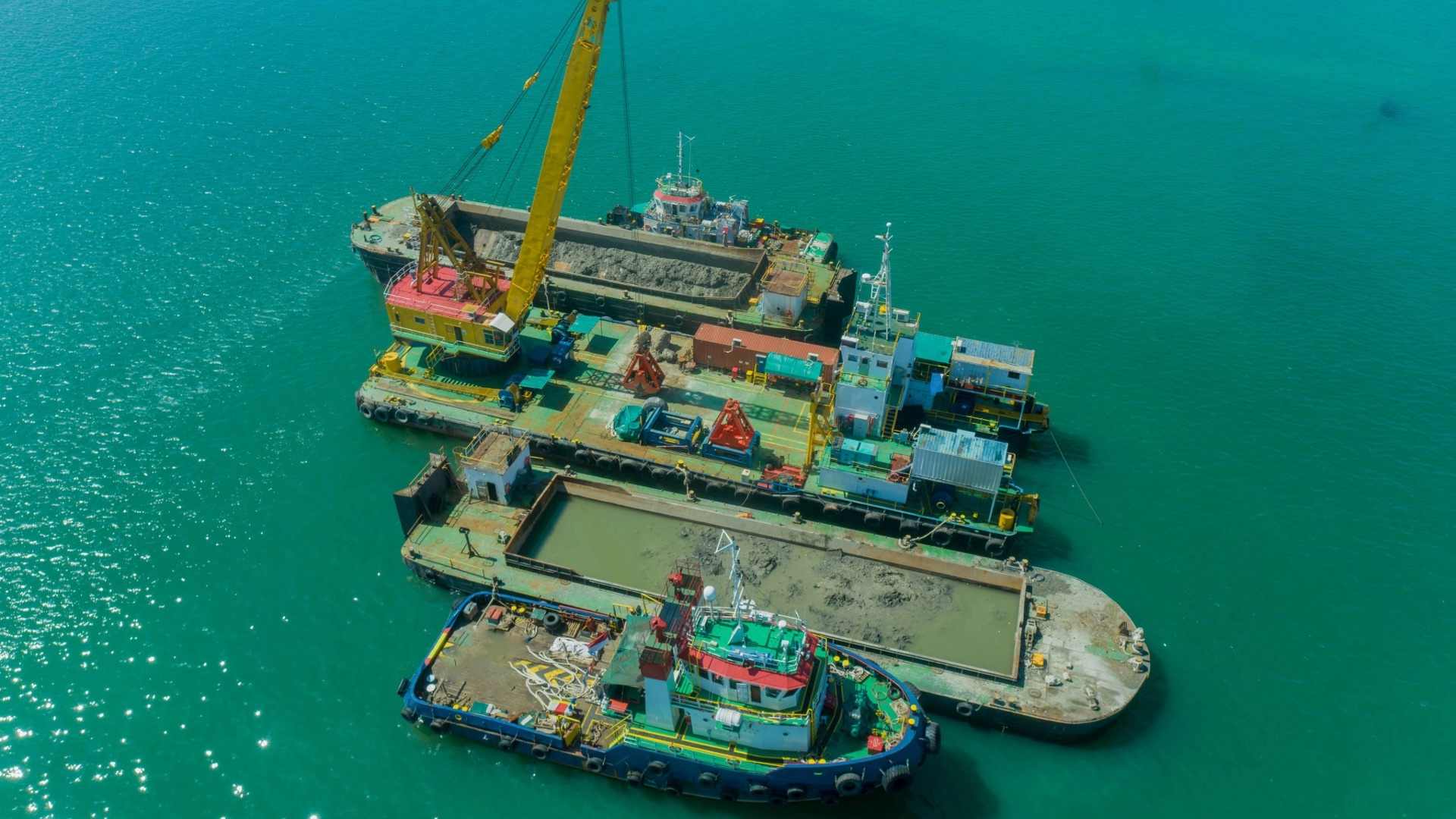Introduction
In a strategic move to boost maritime operations and infrastructure, the Azerbaijan Caspian Shipping Company (ASCO) has completed a large-scale port dredging project at the Baku Shipyard. Conducted over three months, the initiative involved the removal of 79,000 cubic meters of rock and sediment to deepen access channels, enhancing conditions for the safe navigation and docking of large vessels.
This significant dredging effort represents a vital component of Azerbaijan’s broader maritime development agenda, aiming to solidify the country’s position as a key player in the Caspian Sea’s logistics and shipbuilding sectors.
Strategic Importance of the Baku Shipyard
Located on the western shore of the Caspian Sea, the Baku Shipyard plays a pivotal role in regional maritime operations. It serves as a hub for ship construction, repair, and offshore support for enessrgy infrastructure, particularly oil and gas. As vessel sizes continue to grow to meet industrial demands, the need for deeper and safer harbor access has become essential.
To meet these evolving maritime requirements, ASCO initiated a port dredging operation to increase the seabed depth of the shipyard’s approach channels to nine meters. This depth is crucial for accommodating larger vessels that were previously restricted from accessing the docks due to shallow waters and accumulated sediment.
Execution of the Dredging Operation
The project was commissioned by the Baku Shipyard and carried out using ASCO’s fleet of specialized vessels. These included:
- The dredging vessel “Muhandis Balarza Mammadov”
- The dredgers “Bakinskaya-3” and “Bakinskaya-5”
- The tugboat “Absheronskaya-5”
Using a combination of mechanical and hydraulic dredging techniques, the team excavated rock and debris across an area covering 80,000 square meters. The depth achieved—up to nine meters—ensures sufficient underwater clearance for large ships during all tidal conditions.
In addition to sediment removal, controlled drilling to a depth of one meter was carried out to break through more resistant underwater rock formations. This allowed for smoother shaping of the channel and guaranteed a consistent depth throughout the designated area.
Benefits of the Dredging Project
1. Improved Maritime Access
The most immediate benefit of the dredging project is the improved navigability of the entrance channel to the Baku Shipyard. Larger vessels can now approach and dock without the risk of grounding, making operations safer and more efficient.
2. Enhanced Safety Standards
By creating a deeper, well-defined channel, the risk of marine accidents—such as hull damage from underwater obstructions or restricted maneuverability—is significantly reduced. This enhances overall safety for crews, cargo, and infrastructure.
3. Boost to Economic Activity
The improved docking capabilities will enable the Baku Shipyard to take on more and larger-scale shipbuilding and maintenance contracts. This is expected to attract new clients and increase employment in the maritime sector.
4. Long-Term Infrastructure Development
The project also supports Azerbaijan’s broader infrastructure development goals. Enhanced port access contributes to the nation’s goal of becoming a key logistics and shipbuilding hub in the Caspian region.
Environmental Considerations
Like any port dredging operation, environmental concerns were taken into account during project planning and execution. Sediment and rock were removed with care to minimize turbidity and disruption to marine ecosystems. ASCO followed national and international environmental guidelines to ensure that the dredging activity remained within sustainable and regulated limits.
Additionally, the dredged materials were disposed of in designated offshore areas, far from ecologically sensitive zones. Such practices align with best-in-class dredging standards and reflect ASCO’s commitment to environmental stewardship.
ASCO’s Role in Regional Maritime Development
The successful completion of this dredging project underscores ASCO’s capabilities as a leader in maritime logistics and engineering. As one of the companies under AZCON Holding, ASCO has consistently invested in modernizing its fleet and expanding service capabilities, including specialized dredging operations.
By investing in projects that enhance maritime infrastructure, ASCO contributes to both national economic development and regional trade facilitation. The company’s proactive role in maintaining navigable waterways also reflects a commitment to safety, efficiency, and sustainability in maritime operations.
Conclusion
The ASCO-led port dredging at the Baku Shipyard marks a major milestone in Azerbaijan’s maritime development. With 79,000 cubic meters of rock removed and a seabed depth of nine meters achieved, the project ensures safer and more efficient access for large vessels. It opens the door to expanded operations, higher safety standards, and a stronger position for Azerbaijan in the regional shipping and shipbuilding sectors.
As maritime trade and ship sizes continue to evolve, infrastructure like this will play a critical role in economic growth. Through forward-looking projects and effective execution, ASCO sets a high standard for dredging operations and port development across the Caspian Sea and beyond.
